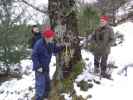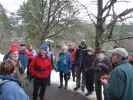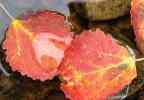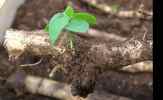 | Caithness.Org | Community | Business | Entertainment | Caithness... | Tourist Info | Site Map |
• Advertising • Chat Room • Contact Us • Kids Links • Links • Messageboard • News - Local & Scottish • News - UK & News Links • About / Contact Us • Submissions |
• Bookshop • Business Index & News • Jobs • Property For Sale • Property For Rent • Shop • Sutherland Business Index |
• Fishing • Fun Stuff • George, The Saga • Horses • Local Galas • Music • Pub Guide • Sport Index • What's On In Caithness |
• General Information • B & Bs • Backpackers • Caravan & Camping • Ferries • Getting Here • Holiday Letting • Hotels • Orkney • Pentland Firth • Sutherland • Taxis |
| N E W S F E E D S >>> |
Caithness News Bulletins February 2009
|
Northern Aspen Woods
Surveyed The day was part of Golspie based North Highland Forest Trust�s Northern Aspen Woods project, which aims to show local people how and why they might encourage and manage aspen in the woods of Sutherland and Caithness. The aspen project is one of 24 separately funded projects being undertaken in Highland with assistance from the Highland Biodiversity Partnership. The project is supported by the National Lottery through the Heritage Lottery Fund, and receives match funding from The Highland Council, Scottish Natural Heritage, Highlands & Islands Enterprise and RSPB Scotland. As the Trust Manager, Steve Robertson, explained, Aspen was once an essential component of the forests that formerly clad the straths and glens of North Scotland. Healthy aspen woodlands also play a key role in promoting biodiversity with several unique species of insects and lower-plants dependent on them for their survival. However, one of the unusual features of aspen in Scotland, particularly in the far North, is that they rarely produce any seed, spreading instead by suckering from the roots of the parent tree. As part of the Northern Aspen Woods project, 1000�s of small trees have also been produced, grown on from locally gathered root cuttings, to try to promote the planting of local aspen in northern woodlands. The day event comprised of a pleasant, snowy walk looking at aspen small and huge in the incredibly diverse woods at Spinningdale, followed by a short session of excellent talks at the Carnegie Hall in Clashmore including from forestry consultant Rick Worrell and John Parrott of Scottish Native Woods. These presentations showed something of the amazing enthusiasm and widespread interest in this plant across Scotland and beyond. One interesting outcome from the day was of the need to produce aspen in greater quantities than is possible with the root cutting process to meet the demand from foresters and land managers. Two new systems are currently being trialed: one using an �airpot�, which produces a great many small fibrous roots that can then be easily removed and grown on into new trees; the other involves trying to create the conditions to encourage nursery grown trees to produce seed. This latter method is based on the theory that Scottish aspen produce seed very rarely because they require hot, dry summers to do so: not that usual an occurrence in the far North! If successful, this method would produce millions of readily usable seed that would allow low-cost plants to be produced for forestry schemes in north Scotland. A key highlight of the day was the presentation of a report and detailed survey of the existing aspen resource of Sutherland and Caithness. This work was carried out on behalf of the Trust by forestry consultant Dr Scott Wilson, with much information also gathered by local volunteers. Scott�s work shows clearly that aspen is very widespread across the north, from the cliffs of Dunnethead, to the Kyle of Sutherland forests to the shores of Loch Roe in Assynt. But that outwith East Sutherland, aspen exists largely in highly fragmented populations unable to support the wide range of other plant and insect biodiversity normally associated with healthy aspen woods. Scott�s report makes several recommendations, including suggestions for work such as promoting local habitat networks in locations where further planting or management of aspen might prove most productive. Scott�s full report will be available shortly on our website and will be sent out to North Highland Forest Trust�s membership and usual circulation list. The Trust would hope to build on any comments received in contributing to the development of a positive way forward for this charismatic species in the forests of the far North. For further information please contact the Trust on 01408 633 986 or steve@nhft.org.uk or at www.nhft.org.uk |














